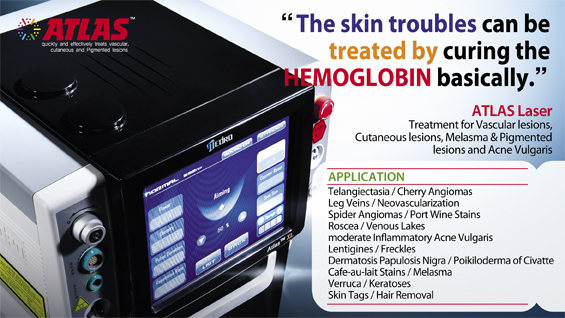Minimally invasive plastic surgery has been established as a major trend in Korean and global aesthetic market. Korean doctors have leading technology in minimally invasive procedures and many doctors around the world are interested in their special knowhow. Dr. Nariaki Miyata of Japan and Dr. Sabine Zenker of Germany often visit Korea to attend seminars and communicate with Korean doctors. In this article, these two experts on minimally invasive plastic surgery discuss in detail botulinum toxin and filler procedures.
Which filler products do you use most often and what are the advantages and disadvantages of the popular fillers?
Sabine Zenker: I prefer biodegradable fillers containing hyaluronic acid (HA) and calcium hydroxylapatite (CaHA). HA has various uses but I think fillers bring the best results in one indication. Personally, the CaHA filler is most effective in facial contouring or correction of the ogee curve or jawline.
Nariaki Miyata: I use Mert’s Radiesse. Radiesse has excellent elasticity and viscosity. This makes it ideal for bringing a volumizing lift. But it may be difficult to apply Radiesse in precision areas such as fine wrinkles.
[Advertisement] ATLAS(Long pulse 532nm & 940nm dual wavelength) – Manufacturer: MEDRO(www.medro.net)
Do you use a different filler for each treatment area? If so, could you explain which fillers are used in different areas?
Sabine Zenker: This is an important aspect of using fillers. I choose a different filler for each patient and treatment area. Fillers are not always ideal for all indications. Based on years of my clinical experience, I have established a treatment technique of Indication Specific Filler Treatment. For example, I use high viscosity fillers for reshaping the ogee curve. High viscosity gives better lifting effect. I use a CaHA filler to smooth out sagging or indented tissues and an HA filler to even out the tear trough.
Nariaki Miyata: I use different fillers for each area. I use an HA filler for the eyelid and lips and Radiesse for the cheek. I sometimes combine the two fillers for other areas. I also change and combine different fillers for the same area depending on the patient conditions.
Fillers that have positive evaluations are usually safe and lasting. What are your criteria for good fillers?
Sabine Zenker: I think fillers with sufficient clinical and post-marketing data make good products. However, the outcome of a filler procedure can be positive or negative depending on the doctor. Therefore, it is important to have appropriate skills and experience as a doctor.
Nariaki Miyata: Effective fillers may not be permanent but last at least for a year. If the effect is too short-lived, there is the hassle of having to perform retreatments.
What are the most common side effects and what is your knowhow on preventing or minimizing side effects?
Sabine Zenker: Side effects of fillers include pain during treatment, post-treatment swelling or thinning of lips, etc. To minimize these side effects, one has to be well-versed in clinical medicine. I enjoy studying and improving on new techniques and concepts in filler procedures. Precision systems for locating optimal injection sites of botulinum toxin or filler increase treatment precision and reduce side effects.
Nariaki Miyata: The most common side effect I have experienced with fillers is subcutaneous bleeding. To prevent this, I recommend using a cannula. More precision is required for sharp needle injection.
-To be continued-




















